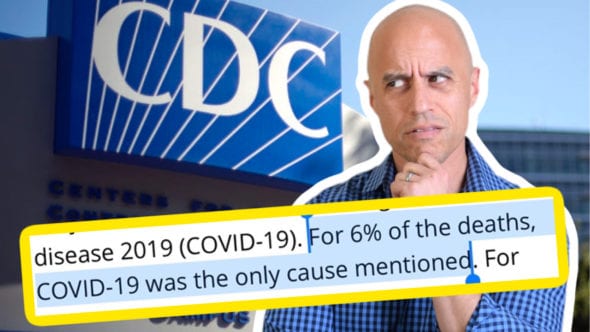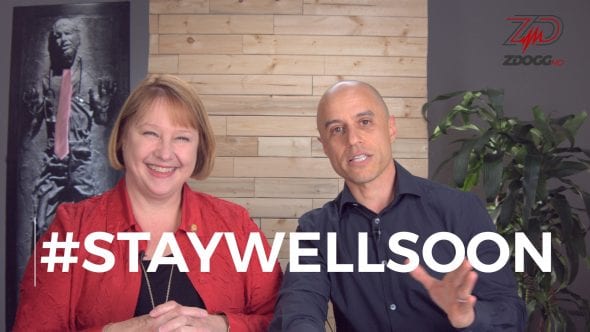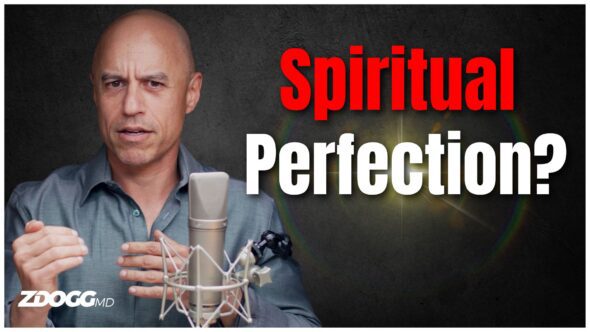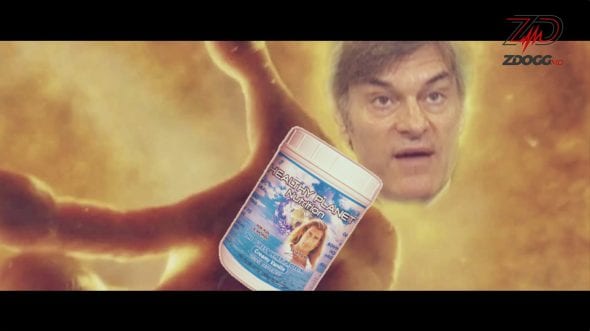The US Senate just voted to make Daylight Savings Time (DST) permanent. Sleep doctors think this is unsafe, and here’s why.
– [Zubin] All right. So the Senate just voted to make daylight savings time permanent. So 24/7, 365, we’d be in daylight savings time Means no more fall back. No more spring forward. No more messed up weirdness. No more time changes. No more forgetting to set your clock back or forward. No more weirdness in scheduling, in transportation, and TV and call nights where you suddenly got an extra hour of call or a shift where you had to come in an hour early ’cause you lost sleep. All that’s gone, right? Sounds great. We’re like, “Senate finally does something right.” But did they? By the way, it’s gotta be approved by Congress, and Biden still. So there’s time, guys.
This is what I wanna talk about. This may be a terrible idea. Almost everybody agrees that the time changes are bad. There’s data that shows that traffic accidents increase in the week around the spring forward that we just went through. And it’s presumably a few things, it could be that we’re losing sleep, which we are, that are circadian rhythm are disrupted which they are. And that there’s also an increase in missed hospital visits, ER visits, things like that because people are screwed up on the time that’s usually in the spring forward phase where you lose an hour. And I don’t know about you but this last week when this happened, I have been just a mess. I’m not sleeping right. And listen, I’m like 48.
I was born in the year they decided to make… 1973, they decided to make daylight savings time permanent for a year. Let’s talk about that in a second, but I’m totally messed up. I’m still messed up. It’s a week later and I haven’t adjusted. And so these changes are not good for our human circadian rhythms. And they’re probably are a public health disaster actually. It’s not a good idea to do this. So, Congress actually did the right thing and said, “Let’s get rid of the changes.” But they may have done the wrong thing in saying let’s make daylight savings time permanent. Now, let’s back up for a second. I get so confused, what is daylight savings time? What is standard time, and where did all this come from?
So standard time is old school time. It’s like time from back in the day, right? By the way, time’s a totally human construct. It’s not a real thing. But let’s leave that aside for a second. So back in World War I, they kind of invented daylight savings time as a way of borrowing an hour of light from the morning and shifting it to the evening. And the principle was, well, if we do that it gets dark later, which means we use less energy. It’ll be darker in the morning, but people will sleep in whatever. So the idea was we’d save energy. And that was the principle behind daylight savings. Now, in 1973 when the Arab world, OPEC decided to put a embargo on oil for the US, energy became a serious problem, kind of like it is now.
And America said, “Well, okay, let’s just make daylight savings time permanent.” And that way we’ll save energy because it’ll be brighter in the evening. So all year round we’ll borrow that hour from the morning and we’ll shift it to the evening. And so it’ll be darker in the morning and brighter in the evening than it would normally be under standard time and we’ll save energy. So they did that in 1973. It took an act of Congress and this is what happened, people hated it. And here’s why, it turns out… And by the way, there’s science behind this, which we’re gonna get into deep. It turns out that when you make it pitch-black in the mornings, particularly in the winter when the days are already shortening, there’s a shift in risk. So now children who are having to go to school at eight something, which is ridiculous by the way end up doing it in pitch-blackness. And particularly in rural areas. They found that there was an increase in childhood fatalities from accidents like cars hitting them, things like that.
Now again, the studies were small so there may be some confounding stuff but there were also… People were just bummed. There was a mood effect to very dark mornings and shifting the light into the evenings, particularly, as we entered winter. Now this actually has a biological basis. So it was so bad that Congress actually almost unanimously acted the next year to say, “Yeah, whoops, we screwed that up. Let’s go back to the spring forward fallback nonsense.” Because they realized, first of all, we hardly saved any energy. The data was real conflicting on that. And we’re seeing, maybe there’s a few more accidents in the morning. Now, what they do see with daylight savings time is probably a decrease in crime. So there’s some evidence of that because, again, like it gets darker later. So, there’s less time to do the crime. You’d have to do it in the morning and nobody wants… I mean, who wants to rob a liquor store at the crack a dawn. That’s lame, they’re not even open, right?
And that traffic fatalities actually might have dropped a little because people are driving most often in the evening. That’s when traffic accidents are most likely to happen during dusk, et cetera. There’s maybe more alcohol on board. So shifting more light into the evening might have helped on that angle, right? So there’s always some kind of give and take. There’s apparently a society that looks at sleep. They’re doctors who are sleep experts and they’re called the American Academy of Sleep Medicine or AASM. And they have put out a position paper saying, Listen, we agree the shifts in time, like fall back and spring forward are terrible. They’re a terrible idea. But we would never make a worse decision, which is make daylight savings time permanent because daylight savings time is not concordant with our human circadian rhythms. And this is what they propose, standard time is much more consistent with how humans actually respond to light and sleep.
And this is why, when you have light exposure, that’s called a photoperiod for humans. When they’re actually exposed to light. And that does affect our circadian rhythms to a degree. We have natural circadian rhythms that make us want to sleep when it’s dark and wake up when it’s light. Now, what happens when you take that hour of light from the morning and you shift it to the evening? Well, people will try to sleep later. And when they wake up in the morning and there isn’t light, they’re gonna feel tired. Their biological clocks are not gonna align with the social clock, which is go to work at eight or nine, get to school at eight or nine, come home at five. So now you’re coming home when it’s bright, and you’re wide awake, and you’re going in when you’re still really a zombie. And it just doesn’t align with human circadian rhythm. So you may end up with sleep disturbances. This is called actually social jet lag because your circadian rhythm is misaligned with your social obligations.
Go to work, go to school, et cetera. And so what the ASSM recommends is permanent standard time. Like what we have in the winter currently. So during our winter, from November to March, we have standard time, from March to November we have daylight savings time. What AASM recommends is, “Hey, keep it at standard time.” And there’s other reasons for this. It turns out when your circadian rhythm is misaligned and your sleep is disrupted. It turns out other things are disrupted. Your metabolic health is disrupted, your cardiac health may be affected. And there’s some data that… Again, correlation and causation, it’s tricky. What are the other effects confounding effects of season changes, like the shortening of the photoperiod in the winter may have more to do with our health than with shifting of our artificial time clocks and things like that. But all that being said, more heart attacks, more metabolic syndrome, more mood disorders and suicides, more sleep disturbances during daylight savings time than during standard time. So there’s something unnatural about shifting our social calendar that way. ‘Cause remember the sun isn’t changing, our day isn’t changing. It’s how we align our social obligations with the photoperiod.
That’s what the Act of Congress does. That’s what daylight savings time is, right? The sun is still rotate… I almost said the sun is rotating around the earth. Suck it, Galileo, the church was right. The earth is still rotating around the sun exactly the same. It’s just we’ve aligned our obligation. So, what should we do? I do not think it’s a slam dunk good idea to go to a permanent daylight savings time. I think we should look at science on this and policy, and our values. That’s our alt middle approach. Say, “Oh, there’s a little truth here. There’s a little bit of benefit to daylight saving time. There’s a lot of benefit to standard time. There’s really little benefit to shifting back and forth. So we can probably eliminate that as an option, and then we have to decide. Maybe we split the difference and change it by 30 minutes. Maybe we do something absolutely crazy and actually go back to standard time, or even keep it daylight savings time but shift our social calendars. Maybe schools shouldn’t start at eight for middle schoolers and teenagers.” We’ve done shows on this, which I’ll link to in the show notes with Dr. Blair Duddy a pediatrician. That letting teenagers and middle schoolers, they buy their natural biological clock, go to bed later, wake up later.
So why do we force them to get up and sleep deprive them at the crack of dawn? It’s probably leading to learning problems, behavior problems, and a lot of other issues. And by the way, going to permanent daylight savings time may actually remove some of the benefit of later school start times. So maybe we need to shift our social assumptions that maybe we need to come home later and wake up later. So, I’m actually a fan of probably permanent standard time although I can be convinced otherwise, but whatever we do, we have to look at the overall picture of this and not just the emotional responses. “Woohoo, longer days.” Which, boy, that feels great until you actually dive into it.
And remember we tried it in ’73, the year I was born. I’m still screwed up from permanent daylight savings time. I blame Congress. Guys, I love you. I’ll put links to some stuff in the show notes. Share this video. If you like what we do, become a supporter of our show, especially on locals ZDoggMD.locals.com. And it’s a beautiful tribe of alt-middle thinkers and not the usual social media garbage. People are nice to each other. And we do live shows and things like that. You get early releases, and if you are a medical professional you can get continuing medical education credit for free just by watching this show. If you are a Supporter on Facebook, Locals or YouTube. Check your feed for the special link on how to obtain CME for this episode. All right, guys, I love you. And we are out.
Category
- The ZDoggMD Show (818)
- Featured Videos (189)
- Doc Vader (142)
- Against Medical Advice (128)
- Medical Humor (95)
- Public Service Announcements (87)
- Music Parodies (74)
- Nurses (59)
- Meditation (46)
- The VPZD Show (38)
- ZVlogg (36)
- ZTalks (28)
- ZBlogg (24)








